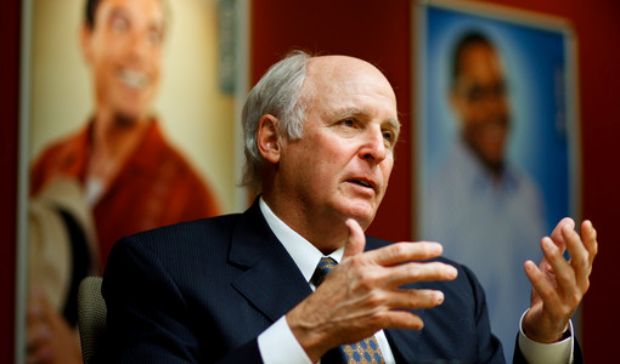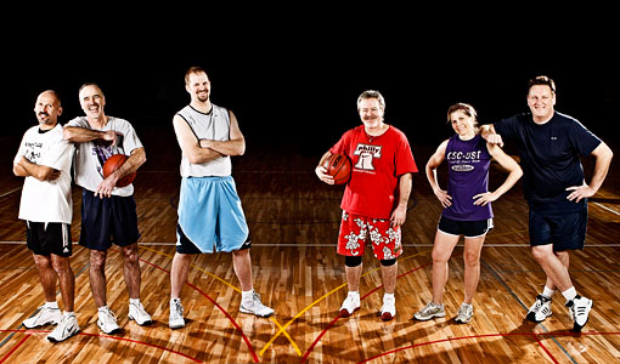You almost think Ray Barton is joking when he talks about how he built Great Clips into the largest hair-care brand in the world. No high-powered marketing campaigns backed by million-dollar budgets from wealthy investors. No simultaneous openings of dozens of shops in multiple markets around the country. No acquisitions of rival hair salon chains. Barton succeeded the old-fashioned way: one store and one market at a time. That was his strategy nearly 30 years ago as a start-up, and it remains his strategy today.
“We just plodded along,” he said. “We never were a star. We put one foot ahead of the other, just like a horse. Then we woke up one day and we were the biggest.”
He shrugs, not in an immodest way, but to suggest that was the only way he felt comfortable doing business. He knew from the beginning that he wanted to build Great Clips into a national brand because he felt one was bound to emerge in the industry.
“When we started franchising, there was this idea of building a national brand,” he said. “We may not have used that term, but was it possible? Yes. Some chains had 400-500 salons, but no national presence. We figured, ‘Why not us?’”
Why not, indeed. Great Clips has become that national brand, with 2,900 stores in 43 states and Canada and annual revenues of $800 million. Barton expects to hit a long-envisioned 3,000-store milestone this year and $1 billion in revenue by 2013. Not bad for a guy who went to five colleges, left two jobs in a six-month period and lost money in his first franchise venture before landing with Great Clips.
Barton was born in South Dakota, the only boy in a family of six kids and the son of an engineer dad who built grain elevators and a mom who ran a restaurant and a cheese shop. They moved around the Midwest during his childhood and settled in the Twin Cities, where he graduated from Minnetonka High School in 1967.
He served in the Navy Reserves, got an accounting degree from San Diego State University and spent four years with Grant Thornton in Denver and Minneapolis. He joined Century 21 to develop real estate franchises and then an oil exploration company, but neither job panned out. Nor did his franchise with The Barbers chain. He opened a Town Square salon in 1981 in downtown St. Paul, intrigued by the hair care industry and similarities with Century 21 when it came to franchising potential. He lost money and sold the franchise after a year, but got to know Great Clips founders Steve Lemmon and David Rubenizer, who had four salons. Barton came on as a partner to recruit franchisees and sell a simple concept.
“Quality, convenience, price – we called it our value quotient,” Barton said.
At the time, independent salons and barber shops with the classic red, white and blue poles dominated the business. You made an appointment for 9 a.m. to 5 p.m. Tuesday through Friday or on Saturday morning, and you bought a shampoo, cut-and-style package for $16.
“We unbundled the services,” he said. “If you wanted just a haircut, you could get it. Six bucks. We were open until 9 p.m. and all day Saturday. Right away, we were different. Convenience was a huge factor, and our stylists were well trained. We did more haircuts and better haircuts.”
Barton and partners sold the first franchises to friends and family members, including his wife and mom, and targeted Des Moines and Omaha before expanding into Denver and the Twin Cities. They provided marketing clout via television and radio advertising and developed training programs, although they scrambled on the latter.
“We realized we didn’t have a training program,” Barton said, so I called my sister and asked her to help us develop one. She said, ‘Sure, when do you need it?’ I said, ‘Two weeks …’”
“And I told him, ‘Of course,’” said Rhoda Olsen, then a Land O’ Lakes human resources manager.
Olsen came through with the training program and joined Great Clips in 1987 as vice president of human resources. Eleven years later she was named president – the No. 2 position under chairman, chief executive officer and majority owner Barton, who had bought out his original partners.
“Actually, I’m No. 2, and she’s No. 1,” Barton said. “I have my job because of Rhoda’s great work.”
Olsen laughs at her brother’s wry humor. She admires how he never wavered from a vision that “we would be the biggest and best, and he never let anybody try to steer us off that path.” As for her role, “I never thought I could do these jobs, but he did, and that carried the day.”
Potential franchisees would approach Great Clips. An Indiana man visited Barton and mailed him a $10,000 check for a franchise, but Barton hesitated because Great Clips had no presence or support services there.
“He figured we wouldn’t say no if he sent us the money,” Barton said, “but we had a strategy. We thought long-term, not short. What was best for us that day was to cash the check because we needed the money. But we were disciplined enough to send back the check.”
In 1988, during the first Great Clips franchisee meeting, Barton proclaimed a “3,000 (salons) by 2000” goal, with annual sales of $1 billion. Two years later, he wrote a mock 1999 Wall Street Journal story about Great Clips’ success and had franchisees sign the story. Never mind that Great Clips didn’t hit those marks; that wasn’t the point.
“It unified our whole organization on a quest,” he said. “It was very powerful from that perspective. When I wrote notes to franchisees, I always finished, ‘I look forward to working with you as we get to 3,000 by 2000.’ My wife said, ‘You have to stop saying 3 by 2.’ I asked her why. She said, ‘Because people are starting to believe you.’”
Jim Hemak believed. He was working for Junior Achievement in Denver when he opened his first franchise in 1984. He built his Great Clips empire to 39 stores in Milwaukee, Colorado Springs and Denver before selling most of them. He owns nine today.
“Ray was extremely committed to a vision of making Great Clips the largest hair salon brand even when we had only 30 to 40 salons,” Hemak said. “People would raise their eyebrows and say, ‘Right, Ray …’ and he’d say, ‘Hey, we’re gonna do it.’ He was tenacious. He had a lot of moxie.”
That tenacity and moxie still are there today. So is Barton’s focus on adding franchises one at a time. So is his commitment to quality.
“Winning is always fun, but we have challenges,” he said. “We don’t spend much time resting (on our laurels). We just think about how we can get better – for our customers and our franchisees.”
Read more from St. Thomas magazine





